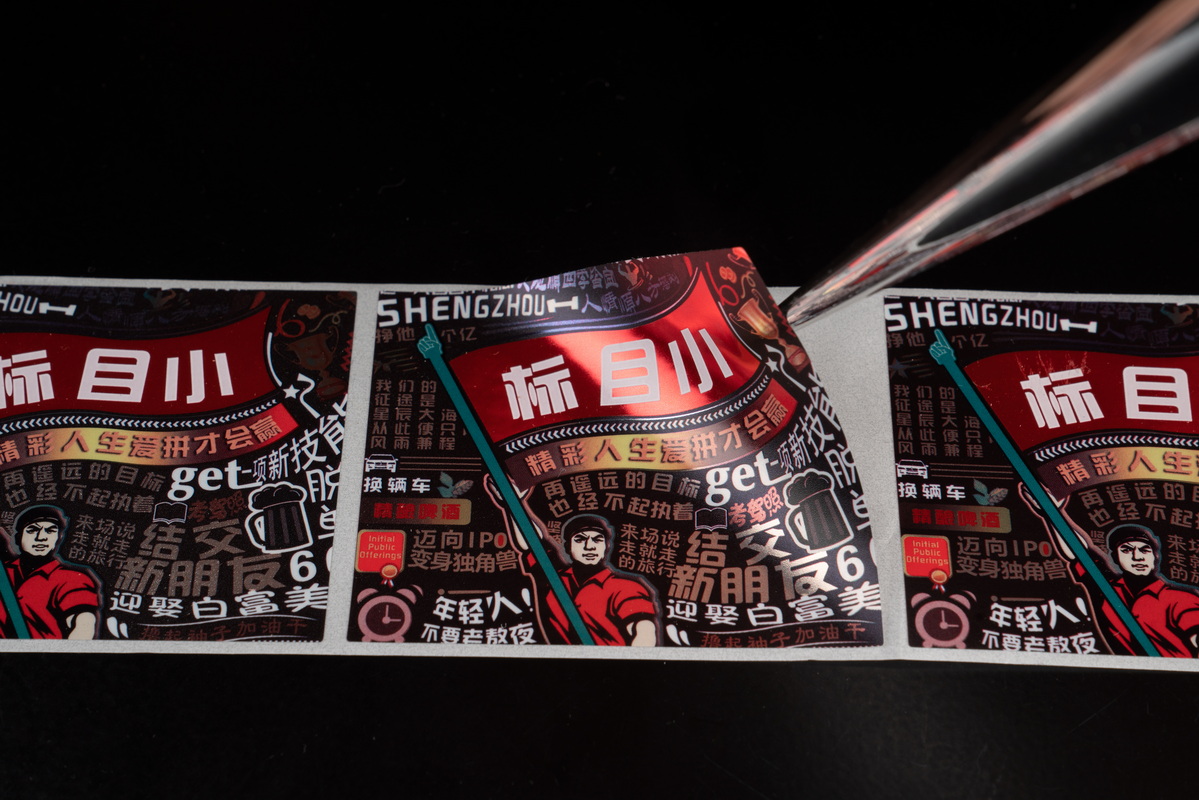
- English
- Español
- Português
- русский
- Français
- 日本語
- Deutsch
- tiếng Việt
- Italiano
- Nederlands
- ภาษาไทย
- Polski
- 한국어
- Svenska
- magyar
- Malay
- বাংলা ভাষার
- Dansk
- Suomi
- हिन्दी
- Pilipino
- Türkçe
- Gaeilge
- العربية
- Indonesia
- Norsk
- تمل
- český
- ελληνικά
- український
- Javanese
- فارسی
- தமிழ்
- తెలుగు
- नेपाली
- Burmese
- български
- ລາວ
- Latine
- Қазақша
- Euskal
- Azərbaycan
- Slovenský jazyk
- Македонски
- Lietuvos
- Eesti Keel
- Română
- Slovenski
- मराठी
- Srpski језик
The lamination process of self-adhesive
2023-11-20
After the adhesive label lamination process is processed, not only can it be better waterproof and anti fouling, providing protection, but it can also increase the glossiness of the label surface.

The glossiness of the same material may vary depending on the lamination process.
There are many different nicknames for laminating technology, such as "over molding", "laminating", "laminating", and so on, which refer to the application of transparent plastic films to the surface of printed materials through hot pressing. It has a wide range of uses, such as book covers, picture albums, commemorative books, postcards, product manuals, calendars, maps, and so on. At present, common laminated packaging products include cardboard boxes, cardboard boxes, handbags, fertilizer bags, seed bags, self-adhesive labels, etc.
The lamination of self-adhesive labels can be divided into single sheet lamination and roll material lamination. Single sheets of paper are coated on the laminating machine, while the roll material is laminated on the laminating station of the label machine or a dedicated laminating machine.
According to different equipment, web paper lamination can be divided into the following types of lamination:
1. Composite film lamination with backing paper - carried out on a label machine, using a specialized composite film with backing paper and covered with film under the action of a laminating device. This is a traditional lamination method. In recent years, it has been replaced by the process of using bottomless paper composite films.
2. Backless paper composite film lamination - carried out on a label machine, with the same lamination principle as the composite film lamination process with backing paper. The bottomless paper film replaces the backing paper after rewinding based on the surface smoothness (surface tension) of the material itself. After the adhesive is bonded to its surface, it can also be peeled off without leaving any adhesive residue. The material used for the bottomless paper film is BOPP film with low surface tension. Backless paper film lamination has a low cost and is currently the most widely used type of lamination.
According to the functions of the laminating equipment and the characteristics of the composite film, there are two laminating methods for single sheet adhesive labels:
1. Ready to apply composite - completed on a laminating machine. The composite process is as follows: first, an adhesive is applied to the surface of the BOPP film on the drum, and the solvent in the adhesive is evaporated through a drying device. Then, a single sheet of paper is composite with the drum film at the composite station, and the two become one under hot roller compression to complete the composite.
2. Pre coated film composite - The surface of the composite film is pre coated with adhesive, and there are two types of films: hot melt adhesive type and pressure sensitive type. Using the heating embossing drum on the laminating machine, the pre coated film comes into contact with a single sheet of paper during lamination. Under the action of the hot pressing drum, the adhesive melts and the film is bonded to the paper as a whole. If a pressure sensitive composite film is used, the heating power can be turned off, and it can only rely on pressure.
3. UV lamination process is the latest technology abroad, mainly applied to unit type rotary label machines with UV drying devices. Its process principle is that the surface of the laminating material is first printed with UV adhesive by a regular printing unit, and the adhesive is cured by a UV drying device to become a pressure sensitive adhesive. Then, the ordinary BOPP film (usually with corona treated composite surface) is composite with the drum material at the lamination station to complete the lamination process. UV coating has low cost, small tension change of composite film, and no need for specialized film, making it suitable for high-speed production. UV lamination is a promising process that is currently being developed in developed countries in Europe and America




